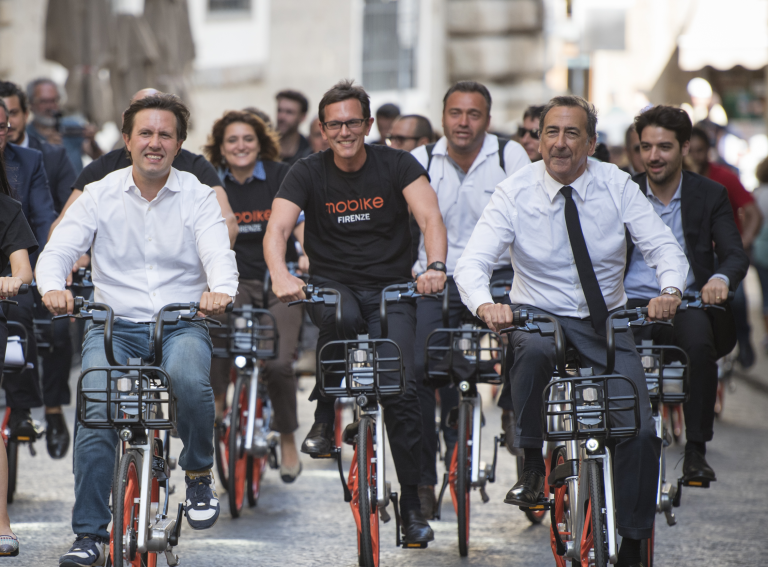One UN-member was selected by the Intergovernmental Panel on Climate Change (IPCC) to help steer the IPCC Special Report on Climate Change and Cities.
That person was Lea Ranalder.
Lea is the Associate Programme Management Officer for Human Settlements at UN-Habitat where she leads on climate diplomacy, multilevel climate action and positions cities within the global intergovernmental landscape.
Her climate diplomacy brought her to both COP27 and COP28 where she helped organise Ministerial Meetings on Urbanisation and Climate Change. This year, she’s set to do the same for COP29 and also sits on a global UN task force to ensure a UN-wide response to the climate crisis.
Zag: What role do cities play in climate change?
Lea: “On the one hand, 70% of emissions come from cities. That comes from how we move our goods, build our buildings, and all other activities. So they really are the driver of climate change. On the other hand, they’re also incredibly vulnerable to climate change. 90% of cities are along the coast and the heatwaves, the landslides, and the rising sea levels hit the urban poor and the most vulnerable the hardest. In Nairobi, where did the floods and heavy rain occur the most? The slums. Hundreds of thousands of people lost their homes and had to be forcefully evacuated because they live in areas that are prone to flooding. So, cities are responsible for climate change but they’re also the most impacted by it.”
Zag: You recently told Zag that there needs to be a much stronger collaboration between cities and national governments to tackle climate change. Can you say more here?
Lea: “You can’t tackle the climate crisis in cities without cities. If we want to reduce our dependence on fossil fuels in the transport sector, one of the key things is walking and biking infrastructure, and making sure it’s safe, reliable and accessible. Expanding public transport or shifting it to low-emission modes needs to be done within a city. It needs to happen in collaboration with cities. But then if you look at who’s the decision maker when it comes to climate action and intergovernmental negotiations, it’s national governments. Cities and mayors often don’t get a seat at the table and that may lead to a disconnect between the national and local level.”
Zag: Do you think some political powers should be decentralised to cities to handle climate change?
Lea: “That’s a very politically sensitive question. Many local governments only have limited ability to collect taxes or borrow money from national markets, let alone international markets. But the trick and the beauty is thinking about how can national governments and we collectively get more money into cities so that they can carry out local climate action? Currently only 10% of climate finance reaches the local level. We need national governments to work with cities and local authorities to cover the different sectors that play a big role in decarbonisation. To me, that’s buildings, and working together to enforce building codes. It’s also transport, where cities with good public transport systems and walking and biking infrastructure have much lower emissions. That’s where the collaboration can really happen. I would love to see every national government have a city climate focal point where a city official who wants to make their city greener can connect with another city that’s done a similar project.”
Zag: What actions do you want to see cities take?
Lea: “I think the bold action that cities can take when it comes to energy and transport is realising what they can control. In many cities, it’s surprisingly a lot more than one might think. Many cities have their own vehicle fleet, like waste trucks or police cars or the cars that mayors ride in – all of this belongs to the city fleet. You can change your procurement mechanisms and say you’re only going to use electric vehicles from now on. If public transport infrastructure is under a city’s decision-making, then they can reserve bus lanes for buses, taxis and bikes but not private cars.
“Cities can also be bold with low-emission zones and only allow certain types of vehicles into their city centres. Or you can incentivise instead of punishing. In many cities around the world, electric or biofuel cars get free parking for example.
“Lastly, you’re only as clean as the electricity that you put into your city and transport fleets. In India, there are several cities where solar PV is on bus station rooftops to ensure that the charging is based on solar energy. Paris gives tax incentives to companies to pay for public transport tickets. Many companies give employees a bonus if they bike to work, which is tax free for them. Those are some little nudging policies but, on the whole, I think there’s a lot that can be done.”
Zag: What’s the biggest transport challenge cities are facing?
Lea: “It’s a chicken and egg problem. If you don’t have good walking or biking infrastructure, and no public transport, people will take the car. And then there are so many people in a car that you don’t want to cycle or walk because it feels dangerous. It’s a vicious cycle that’s reinforcing. One of the big challenges is that the infrastructure in cities has been built around cars. Often, more space is given to cars in cities than to kids. A car needs a 12 square metre parking space and the average space for a child in an apartment is 10 square metres. So we give more space in cities to our cars than our kids. Not to mention that cars stand still 95% of the time and need to be parked somewhere which means more infrastructure to accommodate them.
“These car-centric cities have led to a lack of walking and biking infrastructure, and a lack of safe, reliable, affordable public transport. If I see the price for a 10-minute public transport journey is four bucks, and there are three of us so that’s 12, so that’s 24 return, then gas is much cheaper right? Parking isn’t very expensive in cities either. In Munich, it costs 50 bucks to park your car per year. Munich has one of the highest real-estate prices in Europe and it costs you 50 bucks per year. That’s outrageous.”
Zag: UN-Habitat will bring its climate diplomacy to COP29. What will you be working on?
Lea: “A lot is still up in the air for the COP29 presidency, and it’s still working to define its priorities. UN-Habitat will be working with the presidency to again to propose a ministerial meeting. This year we also want to discuss how public transport can be more reflected in Nationally Determined Contributions (NDCs), and what would collaborations between ministers and mayors look like? How would revision processes look like and how do we align the transport sector between different levels of government? All of this is a big stepping stone towards COP30 where it’s a moment of truth to see if NDCs are updated. There’s lots of interest in making sure that all different sectors can be reflected in NDCs and it feels like the last shot at getting this right and tackle the climate crisis. So the pressure is on.”
Zag: Who is one woman in the industry you would like to spotlight?
Lea: “I would like to spotlight Hannah Murdock from Imperial College London’s Energy Futures Lab, who is conducting research into renewables for the transport industry. And also Lucie Anderton, the Head of Sustainability and North America Coordinator at the International Union of Railways.”





